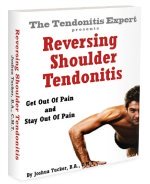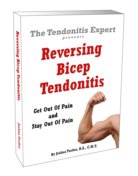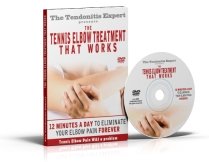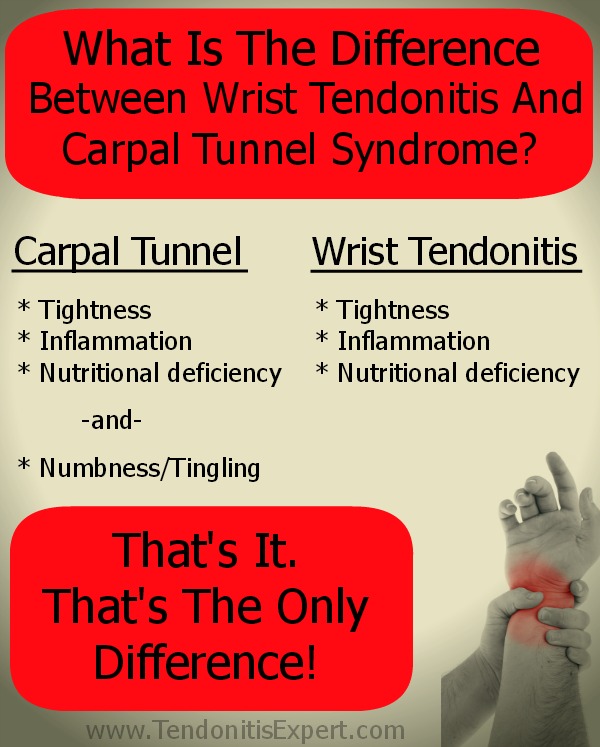Calcific Tendonitis
A Little Bit O' Extra Calcium Never Hurt No One...
Calcific Tendonitis sounds pretty bad.
Tendons turning to bone....yikes.
That's not really what's happening though.
The only -real- problem with this dynamic is that it causes pain, and nobody likes that. I sure don't.
So what is happening that causes a calcification effect in tendon tissue, and why does it come and go? Is it related to Tendonitis?
Can your tendons really turn to bone?
And is there a different between 'calcific' and 'calcified' tendonitis?
Calcific Tendonitis
No, You're Not Turning Into Bone
Calcific Tendonitis is a condition where calcium gathers at and in a tendon.
Also called 'calcified tendonitis', this can happen anywhere in the body, but most commonly shows up in the shoulder cuff tendons.
Over the last 11 years, my professional observation has only seen this show up in a persons with Shoulder Tendonitis.
Said another way, I have never seen Calcific tendonitis of the shoulder in anyone that didn't -already- have a Rotator Cuff Tendonitis dynamic in one or more tendons.
And for the record, tendons don't really get 'calcified'. If they did they would be solid bone.
Despite what doctors tend to think, calcification of a tendon doesn't just show up out of the blue. It is not a random occurrence, nor really a mystery. There are -reasons- that it shows up. They ignore those reasons.
You may want to NOT ignore the reasons calcification happens.
Pain and problem ALWAYS shows up for a reason.
A 'Frozen Shoulder' -can- consist of actual calcified tissue, essentially fusing the interior of the joint together (ball and socket sticking together).
Mostly it's not that. See more about Frozen Shoulder Tendonitis and see how it relates to calcified tendonitis.
How Do You Get Calcific Tendonitis?
A Shoulder Tendonitis dynamic is one of the two primary reasons that one develops Calcific Tendonitis.
Tendonitis leaves clues....Make sure that you understand the tendonitis dynamic. If you don't, you won't understand calcific tendonitis.
See: What Is Tendonitis?
Clues like tight connective tissue, tight muscles, muscle pain and ache, etc. Tight muscles cause increased use of Calcium and Magnesium, and less circulation in and out.
This can leave a person deficient in Magnesium. And, Magnesium deficiency, interestingly enough, is a known cause of Calcific Tendinitis, and adding Magnesium in is a treatment for Calcific Tendinitis.
Tight muscles and connective tissue also trap normal metabolic waste product in the area. This causes more tightness.
And what do tight muscles also do? They put more constant tension on their tendons. This is partly how you get tendon inflammation and Tendonitis, all the -constant- extra tension pulling on the tendons.
Think you'd get unhappy if someone was constantly pulling on your hair 2/7? I'm pretty sure you would. And your tendons get unhappy too.
And when tendons sense more tension, they try to get stronger. What is stronger then tendon? Ligament. And bone. Thus the body gets the call to send strengthening agents, aka Calcium.
The body is amazing, but not particularly smart. If it thinks it needs to get stronger, it will get stronger. This works for us, and can work against us.
So the body can pull nutrients in to make things stronger, but it's safe to say that if a person is experiencing calfific tendonitis, then there is some issue with too much Calcium and/or not enough magnesium.
Here is an article from a peer of mine in New Zealand, Gary Moller. I respect what he has to offer and watch his blog for interesting tidbits.
This short article is a discussion, with charts, about excess calcium and its relationship with magnesium, and issues like osteoporosis. Think about this article from a Calcific Tendonitis perspective as you read it.
www.GaryMoller.com article on calcium (opens in new page)
So Why Do Our Tendons Turn To Bone?
For a couple reasons.
1. First off, Tendons DO NOT turn to bone.
There is no such thing as truly calcified tendonitis. They can become tough, brittle, hard, like a dry crunchy sponge instead of a soft squishy sponge. They can become HARD, but they don't turn to bone per se.
So extra Calcium can get into Tendon tissue, kind of like concrete between bricks. Interestingly enough, under direct observation, the calcium is visible as powder-like on the way in, like gummy like toothpaste as it phases out.
2. The body notices the calcification happening and tries to stop it.
The body's job is to keep you safe, strong, and healthy. It does the best it can, despite all the ways we try to make our selves weak and unhealthy.
All sorts of chemical processes are happening in the flow of calcium in and then calcium out.
The Three Stages Of Calcific Tendonitis
Calcific Tendinitis has three stages.
Usually the Calcuim deposits appear and then disappear naturally as the body compensates and tries to keep you pain free.
Stage 1. Pre-calcification Stage In the first stage the person will not feel any symptoms. Slowly, Calcium is being deposited into the tendon and connective tissue.
Stage 2. Calcific Stage
During this stage the calcium is excreted from cells and forms calcium deposits. The calcium looks chalky, but is not a solid piece of bone.
Once the calcification has formed, a 'resting' phase begins. Officially this is not a painful period, and lasts various lengths of time, weeks, months, or years.
After the resting phase, a resorptive phase begins. This is the most painful phase of Calcific Tendinitis.
3. Postcalcific Stage
This is the stage where the calcium deposit starts to disappear and is replaced by more normal appearing rotator cuff tendon. For some reason, this is when people feel the most pain.
At this stage, the calcium has a consistency of tooth paste. Imagine that gooping up your tissue.....
But because people with a calcification process already have
some degree of Tendonitis happening, it is my experience that you can
press on their tendons at any point here and find a good amount of mild
to severe pain.
Calcified Tendonitis has it's own subtle but distinct feel when a skilled practitioner is palpating the area.
Treatment For
Calcific Tendonitis Symptoms
The treatment for Calcific Tendonitis is almost exactly the same as for Shoulder Tendonitis.
1. Increase your Magnesium Intake.
See Kerri's page on Magnesium Dosage.
Drastically decreasing Calcium intake is an official treatment, but I'm not a big fan of that. Too much Calcium isn't the problem in the first place, so this treatment avoids the source of the problem.
2. Learn How To Reduce Inflammation in the Shoulder Cuff area, including the Rotator Cuff Tendons.
3. Skilled Therapeutic Massage Therapy from a therapist that knows what they're doing.
Definitely interview your potential massage therapist and make sure they know what they're doing.
4. Self Massage.
It's a bit awkward, but if you or a family member can just start rubbing the shoulder area, and then start getting into the painful spots and just rub rub rub, a couple times a day for even just a few minutes, you'll be surprised.
At a certain level, you need to get in there and just squeeze the now dry crunchy sponge of the calcium filled tendon and connective tissue.
Here is another description of Magnesium and self massage: Home Treatment For Frozen Shoulder
5. Reverse the conditions that caused this in the first place.
Reversing the Pain Causing Dynamic of the Tendonitis dynamic makes the entire ecology of the area healthy.
For a complete plan of attack, see Reversing Shoulder Tendonitis. All the factors that cause shoulder tendonitis cause calcific tendonitis in the shoulder. Ironically, the way to treat shoulder tendonitis is the exact same way to effectively treat a 'calcified' shoulder, calcific tendonitis in the shoulder, a frozen shoulder, etc.
Return to the top of this Calcific Tendonitis page.
Go to the main Tendonitis page.
Go to the TendonitisExpert.com homepage.
| Share Your Story
|



